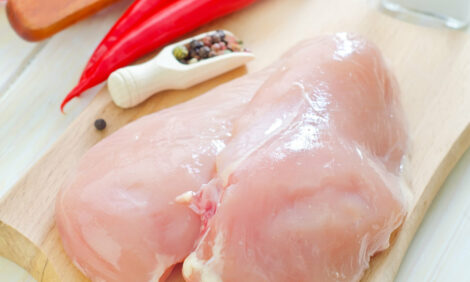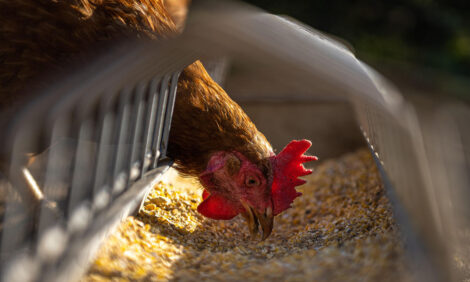



Weekly protein digest: Global food prices slide for the first time in a year
Global food prices fell 2.5% (3.2 points) during June, with the Food and Agriculture Organization of the United Nations’ food price index sliding to 124.6 points. But that’s still 33.9% above year-ago levels.“The drop in June reflected declines in the prices of vegetable oils, cereals and, to a lesser degree, dairy prices, which more than offset generally higher meat and sugar quotations,” FAO explained. FAO still expects this year’s global cereal crop to hit a record high, though it trimmed its production estimate to 2.817 billion metric tons. FAO made a sharp cut its Brazilian corn crop estimate. It also says dry conditions in the Near East have dented global wheat production prospects, prompting a 1 MMT cut to its wheat crop projection that now stands at 784.7 MMT, up 1.2% from last year.
FAO/OECD do not expect a commodity price super-cycle
Prices for most ag commodities should fall slightly in real terms in the decade ahead as production improves to meet rising demand from a growing population, the U.N. Food and Agriculture Organization (FAO) and the Organization for Economic Cooperation and Development (OECD) said in a joint report on their outlook for 2021-2030. During a related presentation, Maximo Torero, FAO's chief economist, said “the fundamentals don't say to us that we will be moving to a supercycle of commodity prices.” The report notes China will likely remain a major demand driver for global ag markets, especially for meat, fish and feed grains. But the country’s growth in population and demand is expected to be at a lower pace than in the past decade.
China launches pilot program to insure pigs
China is launching a pilot program working to insure all pigs at different growing stages and all pig farms in some counties over the next three years, according to a government notice released today. The country also plans to establish a comprehensive system to treat livestock animals that die from diseases in the pilot counties. This program comes in the aftermath of African swine fever that devastated the country’s hog sector and is meant to protect against pig farming risks and to foster stable pig production.
Higher hog supplies in China depress pork prices
A recent USDA report said that between April and June 2021 excess pork production in China has lowered pork prices, caused small and medium producers to liquidate farm inventories, and limited piglet restocking. Chinese authorities are instituting a system to address severe price fluctuations in live hogs and pork in an attempt to manage prices and support farmers. Continued price declines in live hog and pork prices will create potential gaps in pork production in the second half of 2021. Demand for imported pork is anticipated to remain robust.
Following the resurgence of African Swine Fever (ASF) in China’s hog herd in late 2020, sources shared that producers exhibited greater concern about the spread of the disease. Reportedly, hog producers rushed to sell, causing prices to decline. From January 2021 to the end of June 2021 live hog prices fell by nearly 65 percent due to increased slaughter, low consumer demand, and an abundance of pork availability in the market. As the price for pork declined, so did piglet prices.
Sources indicate that breeding farms have responded by culling less productive breeding sows which is affecting piglet production. These trends will decrease the breeding sow population, especially amongst small- and medium-sized producers, while supporting large producers with high efficiency sows. Further, feed prices in China remain relatively high even though China’s industry is considering varying feed ingredient rations. Finally, restocking commercial hog farms with piglets is being delayed according to industry sources and is expected to result in lower pork production in the second half of 2021.
FAS China anticipates that demand for imported pork in the second half of 2021 and early 2022 is expected to remain robust. Over the past several months, small- and medium-sized commercial hog producers have liquidated overweight hogs (over 250 kilograms), standard-weight hogs (around 150 kilograms), and under-weight hogs as the price for pork dropped. Previously, producers were keeping over-weight hogs as consumers and meat processors found the product desirable. The slaughter of under-weight hogs speaks to industry concerns about disease and falling prices as small- and medium-sized producers closed down operations before animals reached market weight.
Sources indicate that losses for professional farrow-to-finish farms have intensified leading to further panic selling. For large-scale producers, the ability to take on short-term losses due to low pork prices has allowed them to continue to maintain production targets. However, sources indicate large producers have also scaled back on the purchase of piglets for breeding and/or scaled back the restocking of hog farms.









